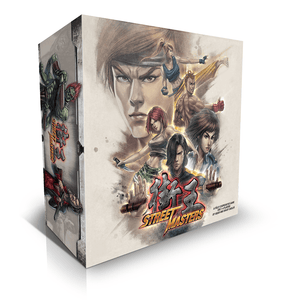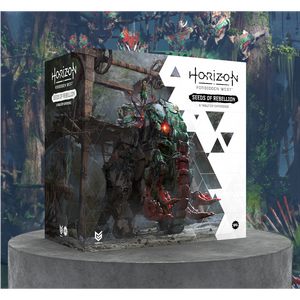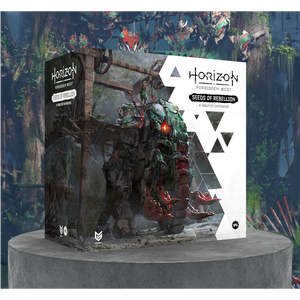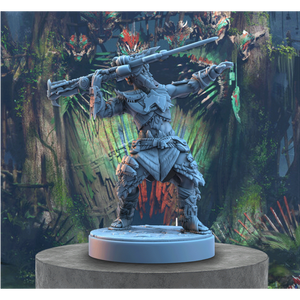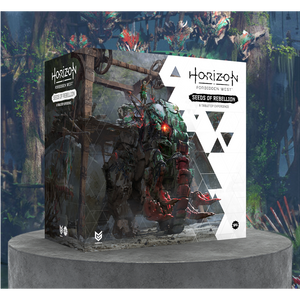Welcome back, Tarnished! It's Sherwin Matthews here again with the second Designer Diary for ELDEN RING: The Board Game, launching November 22 on Kickstarter. And, as promised, you'll find all-new-reveals scattered throughout...

Last time around, I gave you a high level look at our thoughts about how to best represent the Lands Between on the tabletop. If you missed that article, don’t worry — you can check it out here.
Okay, caught up? Awesome. Because from here on out, we’re going to dive into more detailed discussions of each of the core elements identified last time around.
And we’re going to start with the thing that excited me most (along with thousands of other people!) when I first saw the Elden Ring trailer:
Exploration.
How Does Exploration Work in the Board Game?
Travelling across the landscape and exploring new locations is a huge part of the Elden Ring video game’s identity.
The Lands Between are vast and detailed with multiple biomes, each offering their own distinct feel and challenges to overcome.

So, how would we capture that on the tabletop?
Well, our first port of call was to consider how important it might be to remain truthful to the video game’s exact map.
On the one hand, we knew the community had collectively spent hundreds of hours studying and memorising locations, and that felt important to recognise. We want our board game to feel like the video game, and a solid starting place would be to use the same map.
On the other hand, doing so would also telegraph to everyone exactly what enemies, locations, and dungeons to expect in each area. And as rewarding a nod as that might be for the veterans that can recall such details from memory, it did eliminate another important consideration.
Remember how in the previous article, I mentioned we always start our adaptation process by establishing the core DNA of the IP? Well, to do that, in addition to identifying the mechanics, themes, and gameplay, I always pay close attention to one other element: how the original experience feels.
Think back to your first time watching the Elden Ring trailer. After it introduces the Tarnished, the very first thing it does is play through a series of breathtaking landscapes and locations that catch your breath and kick up your heartbeat.

Speaking of introducing Tarnished...
Now cast your mind back to the start of the game, after you emerged from the Stranded Graveyard and Cave of Knowledge. After a short ride to the surface, the game presents you with a magnificent vista; Stormveil Castle sitting on a golden horizon, the lands stretching as far as the eye can see.
I’ll bet in that moment, more than anything, you felt a need to rush out and explore this new place, and discover what wonders it contained.
And that, we realised, is what we needed to capture with exploration.
We could make the tiles feel familiar by using the same art style as the video game’s map. We could create quest areas that feature specific locations in Limgrave and keep dungeons and locations in the correct regions, so nothing feels too out of place.
But to capture that sense of anticipation and imminent discovery — to create an analogue experience that feels as full of possibility as the video game, and that players want to experience again and again — we needed a world that could evolve based on player decisions.
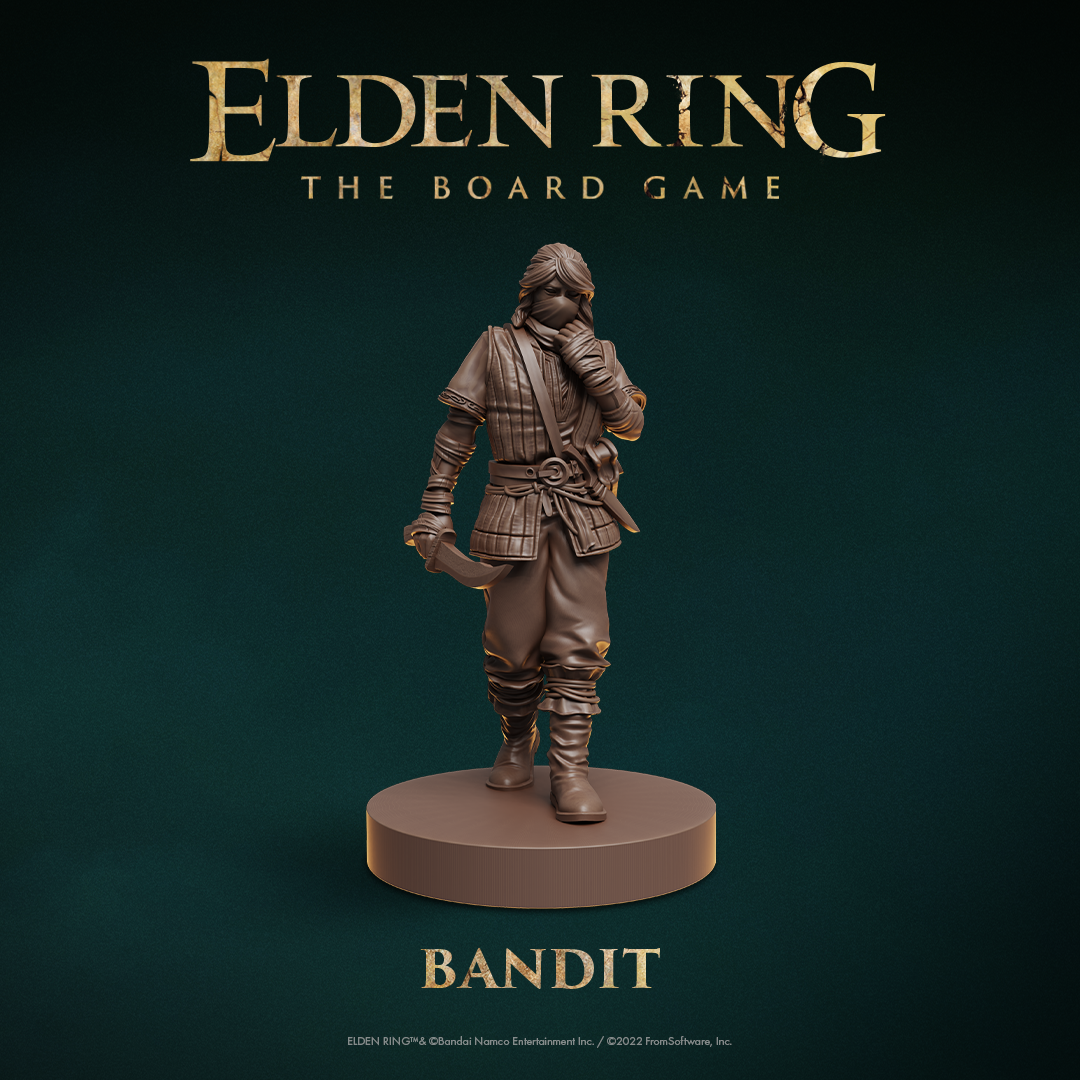
Thus, Tarnished begin on a central tile in the middle of the table, and take turns to explore, placing tiles one by one, creating a shared map that builds out the region they’re traversing.
By generating a landscape that doesn’t exactly follow the existing map, with unpredictable locations on them, each time you sit down to play, you’ll be creating a unique playing area, stepping into the unknown in each game.

Location, Location, Location
Now, it’s important to state, the landscape is just a single element of exploration. Just as important are the locations and terrain elements you’ll come across.We spent several days collating everything it’s possible to find in Limgrave, and hashing out how we might represent them with gameplay.
Some were immediately obvious.
Enemy encounters will drag Tarnished into combat encounters (more about that in the next diary!) that must be overcome before you can explore the rest of the tile they appear on; merchants are lonely figures found huddled over a fire, who will trade or offer words of wisdom. Material sites will let you draw from the relevant deck.

I could go on here, but I’m sure you get the idea.
Other elements were more complex for us to integrate, and presented several possible ways we could create interesting interactions during exploration.
NPCs, for example, can present a really varied number of options, from aid in battle, to side-quests, to clues about how to progress. Map fragments we really liked as a way to unlock new areas that expand the map, and we drafted several methods of emulating that. Stakes of Marika ceased to be a respawn point, and instead now give Tarnished additional lives during boss encounters, keeping their flavour from the game, but providing a unique interaction.
And then, of course, there are sites of grace. They probably need a special note—resting at one restores your health and flasks, but resets enemies, just like the game. I’ll hold off on talking about levelling up until a future diary, though, or this one will go on for several more pages!
Against this backdrop, to keep players focussed on the task at hand, and to prevent too much grinding, we introduced a Guidance of Grace deck.
Guidance of Grace

This deck functions like the guiding light seen in the video game, providing objectives to complete as you explore and ultimately revealing the goal of your quest. These cards can be either single cards that work in a series, unlocking one after another, or a field of options from the start, providing multiple routes to completing the quest.

Of course, some figures you meet will try to tempt you from your path. Characters like Patches will forever dangle side quests that can take multiple main quest sessions to complete, and could even reveal new pathways you might otherwise miss during your campaign…
I don’t want to reveal too much more at this stage because we’ll start to get into spoiler territory. And besides, I think you get the idea. Exploration is core to Elden Ring: The Board Game’s gameplay, and provides a simple system you can easily pick up, but will offer very meaningful decisions as you explore.
I’ll be back very soon to discuss another key element, which I know many of you are keen to find out more about:
Combat.
I can’t wait, as this is really special!
The Combat Diary will be posted in the new Facebook group and on the BoardGameGeek forum as soon as it’s available, so if you want to catch it first, click the links to join.
You’ll also find me and other members of the Steamforged team there, so they’re great places to ask questions before launch…


 Join us on Discord
Join us on Discord


